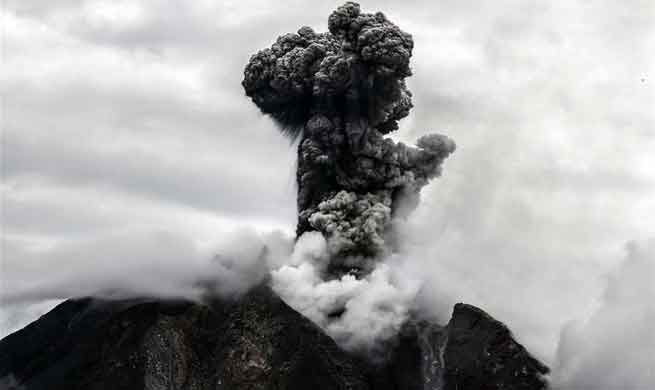WASHINGTON, Jan, 4 (Xinhua) -- The latest discovery of an "astonishing" overabundance of massive stars in an adjacent galaxy has shed further light on the formation and evolution of the universe, a group of international astronomers said while revealing their findings.
The scientists observed some 1,000 newly-found supersize stars in 30 Doradus, a large star-forming region located about 180,000 ligh-years from Earth in the neighboring galaxy known as Large Magellanic Cloud.
Their research, published in the journal Science, includes a detailed analysis of 250 of the heavyweight stars by means of initial mass function (IMF) -- an empirical function in astronomy used to describe the distribution of stars.
"We were astonished when we realized that 30 Doradus has formed many more massive stars than expected." said astrophysicst Fabian Schneider, who is the lead author of the journal article and a Hintze Research Fellow in the University of Oxford. He hailed the results as having "far-reaching consequences for the understanding of our cosmos."
The findings have not only indicated that the number of massive stars may well exceed previous predictions, but also renewed scientists' knowledge about the birth mass of supersized stars -- from 10 times the weight of the sun up to between 15 and 200 solar masses.
The sicentists made an even bolder estimate that a 200-300 solar masses range "appears likely."
"We have not only been surprised by the sheer number of massive stars, but also that their IMF is densely sampled up to 200 solar masses," co-author Hugues Sana, from the University of Leuven in Belgium, said.
Measuring the proportion of massive stars is extremely difficult primarily because of their scarcity. Studies so far have indicated that stars become rarer the more massive they are, and that less than 1 percent of all stars are born with masses that exceed 10 times that of the sun.
The reason scientists have always focused their attention on the observation and research of massive stars, however, is that they have enormous impact on the surrounding universe.
Massive stars play a major role in both the dramatic events as well as the creation of exotic objects in the universe. For example, they explode in supernovas at the end of their lives, unleashing intense radiation as well as powerful winds and resulting in remnants known as black holes and neutron stars.
Along with the latest discovery of additional massive stars comes an increase in the number of supernovas by 70 percent, which Schneider said will lead to "a tripling of the chemical yields and ... four times the ionising radiation."
On top of that, the study shows that the existence of exotic objects such as black holes is more common than what earlier hypotheses have held.
"Also, the formation rate of black holes might be increased by 180 percent, which directly translates into an increase of binary black hole mergers that have recently been detected via their gravitational wave signals," Schneider added.

















